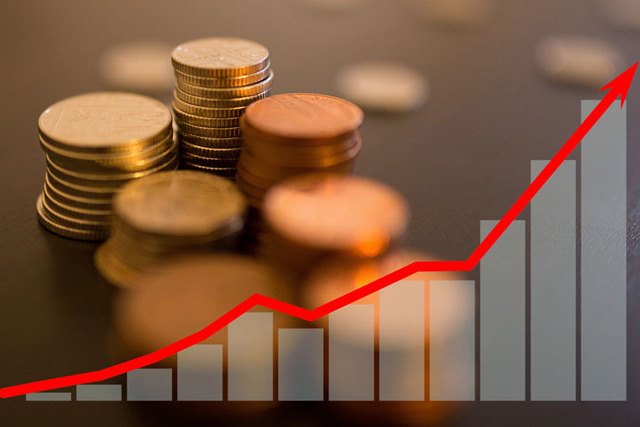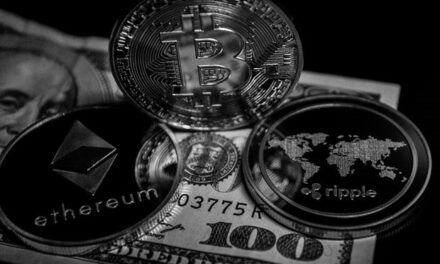Low consumer prices, low taxes, abundant consumer goods, low interest rates and low energy prices are coming to an end. For the most part these trends are inexorable. That’s where FinancialSurvivalNetwork.com can help. They’ve been ahead of the curve and ahead of the trend for over a decade and they’re still look ahead and providing common sense solutions to nearly impossible problems.
Authored by Kerry Lutz at FinancialSurvivalNetwork.com
Electricity In 2020 38% off all natural gas used in the United States went towards generating electricity. There are 1793 gas-powered electric plants in the US. While utilities generally buy most of their natgas through long-term fixed rate contracts, the low spot price that we experienced since 2015 has led to utilities increasing their gas spot purchases and decrease their long-term contracts. With natural gas recently nearing $5.5 per mm btu’s, higher electric costs are baked into the cake. In the past 12 months natural gas prices rose over %130. Assuming a prolonged period of increased gas prices, electricity rates will soon start shooting higher.
Heat It’s about to get way more expensive to heat your home. About half the homes in the US use natural gas for space heating and hot water. This sector alone was responsible for 15% of natgas consumption in 2020. For the same reasons as above, the decline of long term fixed-price supply contracts, prices are headed much higher.
Taxes Unbeknownst to many people, their largest annual expenditure is taxes. It’s not just direct taxes like income, state, real estate, etc., but it’s also indirect taxes levied by federal, state and local governments upon a myriad of businesses and services that are hidden from consumer view. A large portion of your utility bill goes to pay state taxes. Your cellphone bill contains a number of federal, state and local taxes. Tolls and other miscellaneous taxes are also part of the mix. Many of these governmental subdivisions employ expensive union-based labor. As inflation escalates, these employees will get automatic cost of living wage increases. This will increase already staggering pension costs. Therefore, governments across the board will be increasing their already high tax burden. And it will result in higher taxes on everything, even if federal income taxes don’t go up. Get ready for a major upside surprise.
Transportation A large part of our personal budgets are consumed by getting from point a to point b. The cost of doing this has risen and will rise even higher. With gasoline prices up a whopping 85% in the past 12 months, commuters are already feeling the bite. Politicians often increase gasoline excise taxes when seeking more revenue. Same with liquor excise taxes. With electric vehicles expected to capture higher market share, these taxes will have to be raised to make up the difference. In addition, tolls will also increase, to pay higher operating and labor costs in running and maintaining highways, bridges and tunnels.
Appliances As chip shortages continue, raw material costs rise and global labor costs take off to compensate for the near universal loss of purchasing power, appliances costs will increase greatly. The costs of repairing household appliances have already gone up substantially as replacement parts have become scarce due to supply chain issues. In addition, poor economic conditions are reducing the number of outlets where appliances can be purchased. If you’re thinking of buying that new refrigerator, maybe now is a good time.
Automobiles Prices of both new and used vehicles have increased greatly during the past 12 months. Expect this trend to keep going for a long time to come. A large portion of the cost of an automobile is labor and legacy costs. Virtually all auto workers are unionized and they are currently or will shortly be receiving cost of living adjustments (cola). Many auto retirees receive cola’s as well. For legacy automakers, their cost-structure is a straight line higher.
Food Expect food shortages, supply chain disruptions and weather issues to drive food prices much higher in the months and years to come. There’s a reason that the government excludes food prices from the consumer price index (cpi) and it’s not because they’re going down. Higher fuel costs will also result in higher food prices, as modern farming techniques are energy intensive, not to mention that virtually all food produced must be shipped to market. Fertilizers and pesticides will go right up along with oil and natural gas prices.
Interest Rates For nearly two generations, interest rates have fallen to some of their lowest levels in several millennia. That’s all coming to an end. The explosion of debt at every level, government, corporate and individual has been well-documented. Low rates are always dependent upon Fed policy. However, there is a limit to run away money printing. At some point, probably sooner than later, the Fed will have to make a decision between the economy and currency. They’ll choose the currency and will then have to raise rates, encounter massive debt defaults and a major deflationary cycle that will usher in an era of higher real rates.
Precious Metals For thousands of years, gold and silver have been real money. It’s only since the advent of unlimited fiat currency that they’ve been forced to take a back seat to paper forms of wealth. Since 1971 when Nixon closed the gold window, the paper wealth orgy has continued on unabated. Now, it appears that the can has been kicked down the road as far as possible and the day of reckoning is nearly at hand. The golden rule will again reign supreme, “He who has the gold, makes the rules.” Whether the nominal price of gold increases or not, the real value is due to make a tremendous move forward.
Guns and Ammo Since 2008, the demand for guns and ammunition has been nearly insatiable. As the world has gotten deeper into an endless morass of debt and loss of freedom, US sales of these essential self-defense products have catapulted forward. The new inflationary trend will increasingly weaken the ability of government to protect its citizens. As Americans we’ve been lulled into a false sense of security that government can actually keep us safe. Moving ahead, this illusion is rapidly fading. Witness the 2020 widespread urban riots. As more dangerous cities and states become the norm, people will increasingly ignore draconian gun control measures and take whatever steps are necessary to protect their families and themselves. It’s going to be a glorious time to be a gun dealer.





